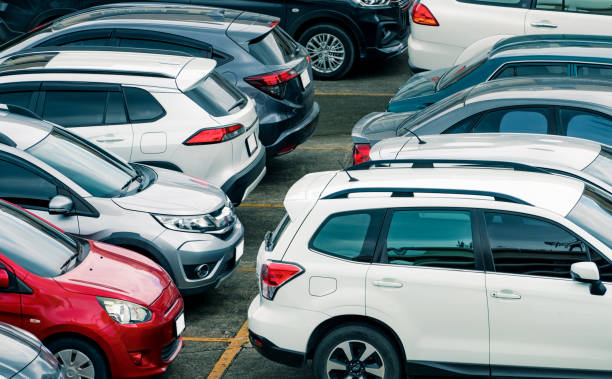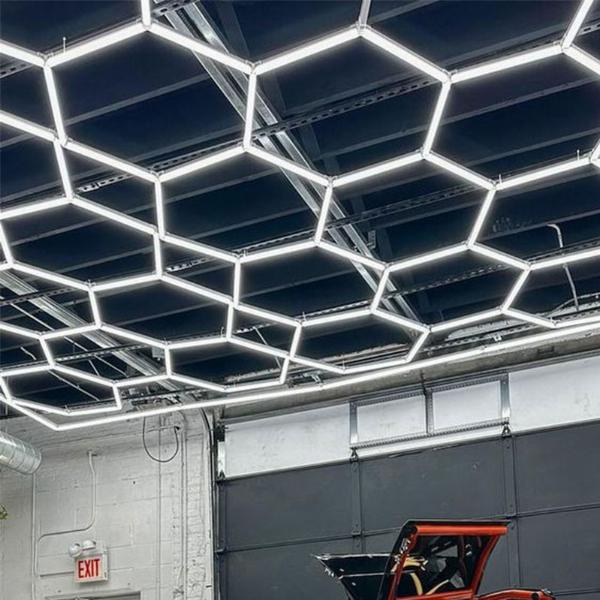 Custom SEO Strategy – Your Path to Page #1 Starts Here!
Custom SEO Strategy – Your Path to Page #1 Starts Here!
How to Plan Your Perfect Valley of Flowers Trek: A Beginners Guide
Written by HIMALAYAN DAREDEVILS » Updated on: March 07th, 2025
If you have always wanted to walk across meadows filled with colorful flowers while being surrounded by mighty Himalayan ranges, then the Valley of Flowers Trek is perfect for you. Located in Chamoli district in the state of Uttarakhand, it is famous for its exceptional landscapes, Himalayan flora, and calmness. Every year, from July to September, the valley transforms into a dazzling display of flowers making it one of the scenic trekking locations in India.
Difficulty wise, the Valley of Flowers trek is considered moderate so it is perfect for beginners wanting to experience trekking in the Himalayas, but at the same time do not want an extreme level of difficulty. The trek encompasses dense forests, rivers, and beautiful wooden bridges that will ultimately lead up to the opening of the valley which is of remarkable beauty.

In this guide, we will discuss everything that goes into planning your Valley of Flowers trek in Uttarakhand, from the best time to visit and important permits to fitness regimes and packing. Whether you are an admirer of nature or a photography enthusiast or an adventure seeker, this trek will surely make for an unforgettable experience so prepare to be mesmerized by the landscapes of the Himalayas.
Ideal Season for Valley of Flowers Trek
The best time to undertake the Valley of Flowers trek is between June and September as this is when the valley is at its best. As the monsoon rains come in, the meadows change into a colorful paradise with lakhs of exquisite Himalayan flowers. This period also marks the best time to evaluate the valley's astounding beauty as different types of flora are available for enjoyment throughout the entire period.

In late June and early July the first flowers begin beneath the ground, and by August the valley is fully covered in colorful flowers. September signals the end of the flowering period however, the valley still remains beautiful as all of the lush greenery becomes visible and set against the bright blue skies.
Walking this season is best as the temperatures are moderate ranging from 12°C to 20°C, ensuring comfort for the trekkers. But the meadows can be slippery because the rains due, so proper shoes and gear are necessary while trekking in these conditions.
How to Reach Valley of Flowers
To reach the Valley of Flowers, one must take a vehicle and trek on foot as the road paves way for Govindghat from where the trek begins.
The Jolly Grant Airport in Dehradun is the nearest airport which is nearly 285 km from Govindghat. One can take a taxi or bus directly from the airport to Joshimath and then to Govindghat. The nearest railway station is Rishikesh, public transportation to the trek starting point is available. It is approximately 270 km from Govindghat.

The Valley of Flowers can also be reached through the road where gondolas from Rishikesh, Haridwar, and Dehradun available on NH7. Joshimath can also be reached from the other towns via buses and shared taxis from where it is a short drive to Govindghat.
A 13 km trek, hailing from Govindghat leads straight to Ghangaria, the base camp of the Valley of Flowers trek. The trek can be completed on foot or by hiring ponies or through a helicopter that can be used depending on the weather. The beautiful Valley of Flowers Uttarakhand is situated 3.5 km away from Ghangaria which can be reached by trekking towards nature.
Valley of Flowers Trek Itinerary: Day-Wise Breakdown
The Valley of Flowers Trek is bound to leave you speechless as it traverses one of the most beautiful regions in India. Over the course of six days, this itinerary was carefully crafted to help trekkers make the most out of everything that this valley has to offer.
Day 1: Reach Govindghat (5,500 ft)
Make your way to the base camp located in Govindghat. From Haridwar or Rishikesh, you can reach the town through a spectacular drive which will serve as the starting point for the trek.
Day 2: 13 km trek from Govindghat to Ghangaria (9,800 ft)
Take the 13 kilometer stretch from Govindghat to Ghangaria. The trail is of moderate difficulty and has colorful villages, waterfalls, and various terrains that highlight the beauty of the location.
Trekking Routes is of about 13 km Trek to Govindghat from Ghangaria Ghangaria: 14,100 ft. Govindghat is at 11,000 ft and the valley of flower is at 12,000 feet
Day 3: Ghangaria to Valley of Flowers
From Ghangaria embark on a 10-mark round trip to the valley of flowers. This UNESCO World Heritage Site is renowned for its stunning landscapes populated with fruitful wildlife ranging from blue poppies and Brahmakamal to even Himalayan Orchids.
Day 4: Ghangaria to hemkund sahib
Head towards sindh ghat and walk around the amazing lake in bhag bikhari. This sacred resort offers spiritual solace amongst these majestic mountains next to the glacial lake supreme.
Day 5: Govindghat – 13 km Ghangaria: 14,100 ft, Govindghat: 11,000 ft
The valley of flowers is at 12,000 feet. This route provides an astonishing view of a plethora of waterfalls and other beautiful natural sights
Day 6: Departure from Govindghat
Conclude your trek with departure from Govindghat whilst carrying all the memories of meadows and pristine streams that tower above the define the valley of flowers.
Essential Trekking Gear for Valley of Flowers Trek
For a comfortable and safe Valley of Flowers Trek, it is equally important to have the right set of tools at hand. Here is the list you would need:
Clothing: When it comes to a changing climate, it is best to have layered clothing. Fleece jackets, waterproof outside layers, and moisture-wicking base layers are essential. A light down jacket helps with scoffs during the cold nights and mornings.
Footwear: Ensure you buy high-ankle trekking boots with solid grips along with extra pairs of woolen and synthetic socks which help to keep your feet warm and dry.
Backpack & Rain Cover: For carrying essentials a 30-40L bag is sufficient. Make sure it has comfortable straps and a rain cover to avoid unexpected showers.
Trekking Pole: To maintain balance and reduce strain on the knees while trekking on steep portions of the trail, an adjustable trekking pole that is lightweight serves best.
Rain Gear: The valley witnesses rain frequently, so make sure to take a poncho along with quick dry pants and a waterproof jacket.
Accessories: Don’t forget to take a sun hat, sun glasses, gloves, and a headlamp with spare batteries.
First Aid & Essentials: Protect yourself from harsh weather by applying insect repellent, sunscreen (SPF 50+), and lip balm, while keeping a basic first-aid kit on you along with extra medicines.
Dehydration cannot be thought of as a deal breaker. During the trek you must take a reusable water bottle along with energy bars, nuts, and ORS to stay hydrated and energized.
Fitness Preparation & Packing List for Valley of Flowers Trek
Fitness plays a vital role while preparing for a trek. Although, packing is as important as fitness. Therefore, let's look at fitness preparation and packing list:
1. Cardio & Stamina Training: For enhanced endurance, jogging, cycling, or stair walking for at least four weeks should be included in the workout plan. This will aid in getting energy for steep ascents throughout the trek.
2. Strength & Mobility: To achieve greater muscle strength, add lunges and squats and other core strengthening workouts. Activities like yoga or stretching help increase mobility and decrease the chances of getting hurt throughout the trek.
3. Clothes For Layering: Carry moisture-wicking base layers, a fleece jacket, and a waterproof outer shell. Since the weather can be unpredictable, multi-layered clothing makes it easy to adjust to sudden changes in temperature.
4. Important Footwear and Equipment: For better grip on rocky tracks, high-ankle trekking boots should be worn. In addition, a trekking pole, waterproof backpack, and rain cover will make travel more convenient and comfortable.
5. Drinks & Snacks: Drink water frequently using a reusable water bottle and carry energy bars or dry fruits for quick energy. Minimize heavy meals and alcohol to avoid altitude sickness.
Safety Tips for First-Time Trekkers
To make a trek memorable is to complete it without any injury. A safe trek is the first priority, therefore the tips mentioned here should be considered by trekkers like you:
1. Select the Appropriate Trek – As a beginner, you may want to select an easier trail to build confidence and stamina before moving onto more challenging routes.
2. Wear Proper Clothing and Footwear – The right attire for trekking includes layered clothes, trekking shoes, and a backpack packed with crucial items, which guarantees ease and safety during the trip.
3. Maintain Proper Nutrition and Hydration- Remember to carry enough water as well as healthy snacks to keep your energy levels up and prevent dehydration or fatigue when trekking.
4. Familiarize Yourself With the Weather- Familiarize Yourself With the Weather-me rain gear just in case, as temperature can vary unexpectedly in remote or mountainous regions.
5. Mind Your Pace – When trekking at higher altitudes, walking at a steady pace, taking breaks, and trying to avoid too much exertion will be a good way to avoid getting exhausted or injured.
6. Train Beforehand – Put in sustained walking, cardio, and strength exercises to prepare your body for long trekking hours.
7. Carry a First Aid Kit – Pack antiseptic, pain relievers, and personal medication for minor injuries.
8. Respect Nature – Do not litter, stay on marked trails, and follow eco-friendly principles to trekking regions.
9. Trek In A Group – If you are a novice, traveling with experienced trekkers or a guide will ensure your safety and support, as well as enhance your chances of being guided through unfamiliar terrains.
Conclusion
The remarkable vistas afforded while trekking through the Valley of Flowers Trek, with its splendid variety of flowers, rich greenery and majestic mountains, is second to none. Trekking enthusiasts need to check on safety measures in advance to get the best out of this natural beauty. With a group, drinking enough water, maintaining a steady speed, and appropriate equipment all contribute to making the journey easier and more enjoyable. Training before the trek, bringing along a first aid kit will improve the overall experience while the stark ecosystem of the valley is treated with utmost reverence.

If you wish to visit this UNESCO World Heritage site without any hassle, the team from Himalayan Daredevils has you covered. We devote our efforts toward your safety while ensuring the perfect blend of fun packed excursions. Forget the stress of coordinating the trip with their Advanced team and discover the beauty of the valley while they take care of everything. So tighten your shoes, enjoy the refreshing mountain breeze, and get ready with Himalayan Daredevils for what is bound to be the most exciting part of the trek - the Valley of Flowers!
Disclaimer: We do not promote, endorse, or advertise betting, gambling, casinos, or any related activities. Any engagement in such activities is at your own risk, and we hold no responsibility for any financial or personal losses incurred. Our platform is a publisher only and does not claim ownership of any content, links, or images unless explicitly stated. We do not create, verify, or guarantee the accuracy, legality, or originality of third-party content. Content may be contributed by guest authors or sponsored, and we assume no liability for its authenticity or any consequences arising from its use. If you believe any content or images infringe on your copyright, please contact us at [email protected] for immediate removal.
Copyright © 2019-2025 IndiBlogHub.com. All rights reserved. Hosted on DigitalOcean for fast, reliable performance.






